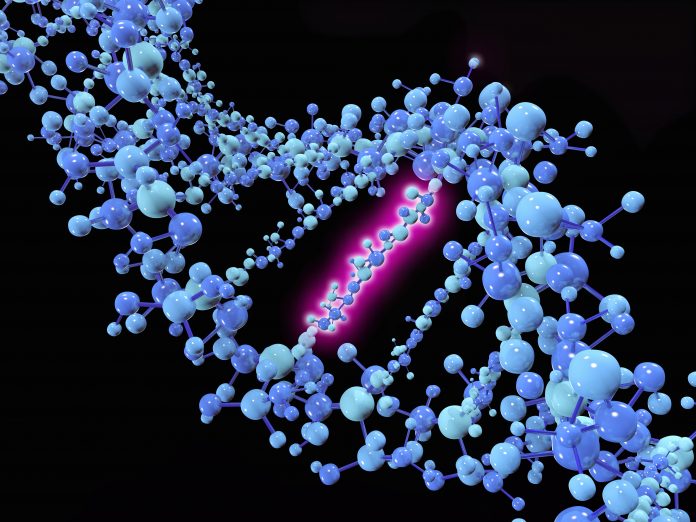
A non-genetic adaptation that could drive resistance to targeted therapy in T cell leukemia has been uncovered by researchers in the Perelman School of Medicine, University of Pennsylvania. Their findings were published recently in Molecular Cell.
DNA must be folded just right for the cell to properly function. Genome misfolding is linked to many diseases, including cancer.
“Genome folding controls where the genes are in the space of the cell and is important for proper control of gene activity,” said R. Babak Farvabi, an assistant professor of Pathology and Laboratory Medicine at Penn, who led the study with Yegiao Zhou, a Genetics and Epigenetics graduate student. “We’ve discovered that T leukemic cells can change the folding of their genome to adapt to targeted therapy and evade its anti-cancer effects.”
One of the most common causes of resistance to cancer therapy is the acquisition of new genetic mutations, which enable cancer cells to bypass the effect of the treatment. Epigenetic adaptations, on the other hand, are chemical modifications and alternate packaging of the genome, which lead to the creation of different cell types in the body, despite originating from an identical genetic code. These adaptations are now emerging as equally important contributors to cancer therapy resistance.
It has so far been unclear whether and how cancer cells modify their genome folding—an epigenetic regulator of gene activity—to develop resistance to cancer drugs.
Faryabi and collaborators biochemically and optically study T leukemic cells and their resistance to a class of drugs called Notch inhibitors. Notch is one of the most frequently mutated genes in T cell leukemia.
The researchers discovered widespread changes in the folding of the genome of cells that were resistant to Notch inhibitors, and they found that these genome refolding events were driven by the repositioning of EBF1, a transcription factor required for the generation of B cells at the expense of T cells. Moving EBF1 to another location within the cancerous T cell space leads to its activation. In turn, EBF1 alters the folding of other parts of the genome and ultimately activates B cell genes, conferring resistance to Notch inhibitors, in the absence of any genetic mutation.
Specifically, the researchers saw widespread alterations in successive layers of chromatin organization including spatial compartments, contact domain boundaries, and enhancer positioning upon the emergence of targeted therapy resistance. Together, the group’s findings suggest that lineage-determining transcription factors can instruct changes in genome topology as a driving force for epigenetic adaptations in targeted therapy resistance.
The implications of the findings are threefold, the researchers said: Faryabi and his team now understand the underpinning mechanism of epigenetic adaptation in this cancer type in unprecedented detail. Clinicians, therefore, may now be able to use those findings to better identify which patients may become resistant to therapy. And testing for epigenetic changes should complement the existing genetic tests to fully implement a personalized treatment strategy for patients, Faryabi said.
“Sequencing the genome of these patients, in this case, would not be informative,” Faryabi said. “But now, we can use existing technology to look at the location of genes inside a patient’s cell, and we can potentially predict the cell’s behavior in response to the treatment.”













